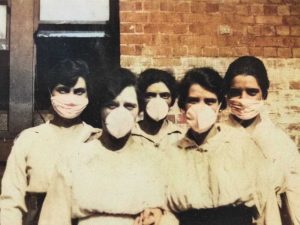In 1918, a particularly virulent and contagious influenza pandemic (H1N1 strain) spread across the world. It killed nearly 50 million people and up to 100 million, according to some recent studies. The most likely transmission of the disease would come from carrier pigeons that were used in the different armies to communicate across the various fronts. They were even called “flying rats” because, like rodents, they were vectors of several diseases.
Aided by the development of transportation, the progression of the virus was lightning fast. In less than three months, all continents were affected. The main areas affected were India, China, and Europe. The pandemic more created global awareness, which led to the formation of the International Hygiene Committee, which later became the World Health Organization (WHO).


